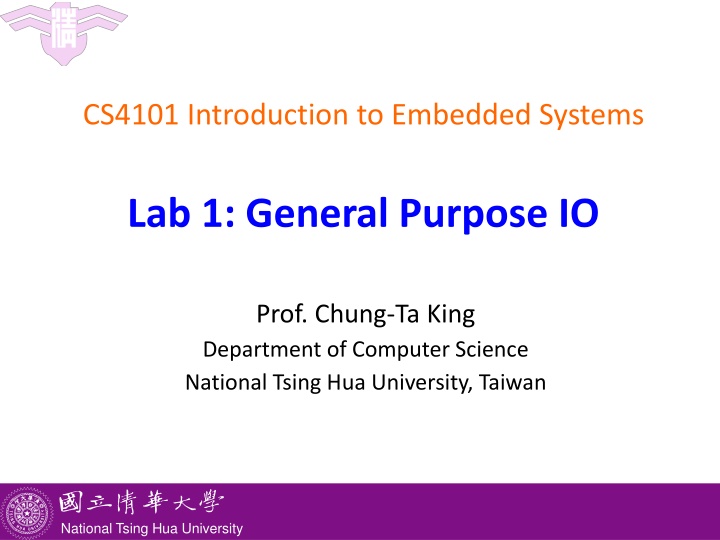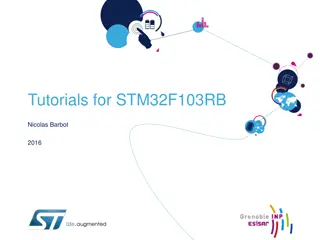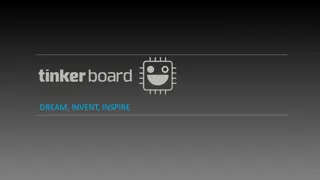
Embedded Systems Lab: General Purpose IO Tutorial with MSP430 LaunchPad
"Learn the basics of General Purpose Input/Output (GPIO) with MSP430 LaunchPad in this lab tutorial at National Tsing Hua University, Taiwan. Understand GPIO configuration, run a debugger for debugging, and explore sample codes for input and debugging scenarios."
Download Presentation

Please find below an Image/Link to download the presentation.
The content on the website is provided AS IS for your information and personal use only. It may not be sold, licensed, or shared on other websites without obtaining consent from the author. If you encounter any issues during the download, it is possible that the publisher has removed the file from their server.
You are allowed to download the files provided on this website for personal or commercial use, subject to the condition that they are used lawfully. All files are the property of their respective owners.
The content on the website is provided AS IS for your information and personal use only. It may not be sold, licensed, or shared on other websites without obtaining consent from the author.
E N D
Presentation Transcript
CS4101 Introduction to Embedded Systems Lab 1: General Purpose IO Prof. Chung-Ta King Department of Computer Science National Tsing Hua University, Taiwan National Tsing Hua University
Introduction In this lab, we will learn the basic GPIO of MSP430 LaunchPad Configure the I/O port of LaunchPad for input and output Run the debugger for basic debugging 1 National Tsing Hua University
Sample Code 1 for Input #include <msp430.h> #define LED1 BIT0 //P1.0 to red LED #define B1 BIT3 //P1.3 to button void main(void){ WDTCTL = WDTPW + WDTHOLD; //Stop watchdog timer P1OUT |= LED1 + B1; P1DIR = LED1; //Set pin with LED1 to output P1REN = B1; //Set pin to use pull-up resistor for(;;){ //Loop forever if((P1IN & B1) ==0){ //Is button down? P1OUT &= ~LED1; // Yes, turn LED1 off } else{ P1OUT |= LED1; // No, turn LED1 on } } } 2 National Tsing Hua University
Sample Code 2 for Debugger #include <msp430.h> #define LED1 BIT6 // P1.0 to green LED #define B1 BIT3 // P1.3 to button volatile unsigned int i, j; void main(void){ WDTCTL = WDTPW + WDTHOLD; // Stop watchdog timer P1OUT |= LED1 + B1; P1DIR = LED1; // Set pin with LED1 to output P1REN = B1; // Set pin to use pull-up resistor for(;;){ while((P1IN & B1) != 0){ // Loop on button up i = P1IN; j = P1OUT; } P1OUT &= ~LED1; // Turn LED1 off while((P1IN & B1) == 0){ // Loop on button down i = P1IN; j = P1OUT; } P1OUT |= LED1; // Turn LED1 on } } 3 National Tsing Hua University
How to Debug? In the code line containing: i = P1IN; j = P1OUT; Add new expression from Expressions window Right-click on the appropriate line of code and set the Breakpoint When the code runs, it will hit the breakpoint and stop You can now observe the value 4 National Tsing Hua University
Debugger Output 1111 1110 01001000 00000110 00001000 No need to care about other bits! 5 National Tsing Hua University
Lab 1 Basic 1: Flash the red and green LED alternatively whenever the button is pressed and released once. The LEDs change right after the button is released. Run the debugger to show the content of P1IN whenever the LEDs change. Basic 2: When the button is down, only flash the green LED. But if the button is pressed long enough, flash only the red LED instead. When the button is released, neither of the LEDs is on. 6 National Tsing Hua University








